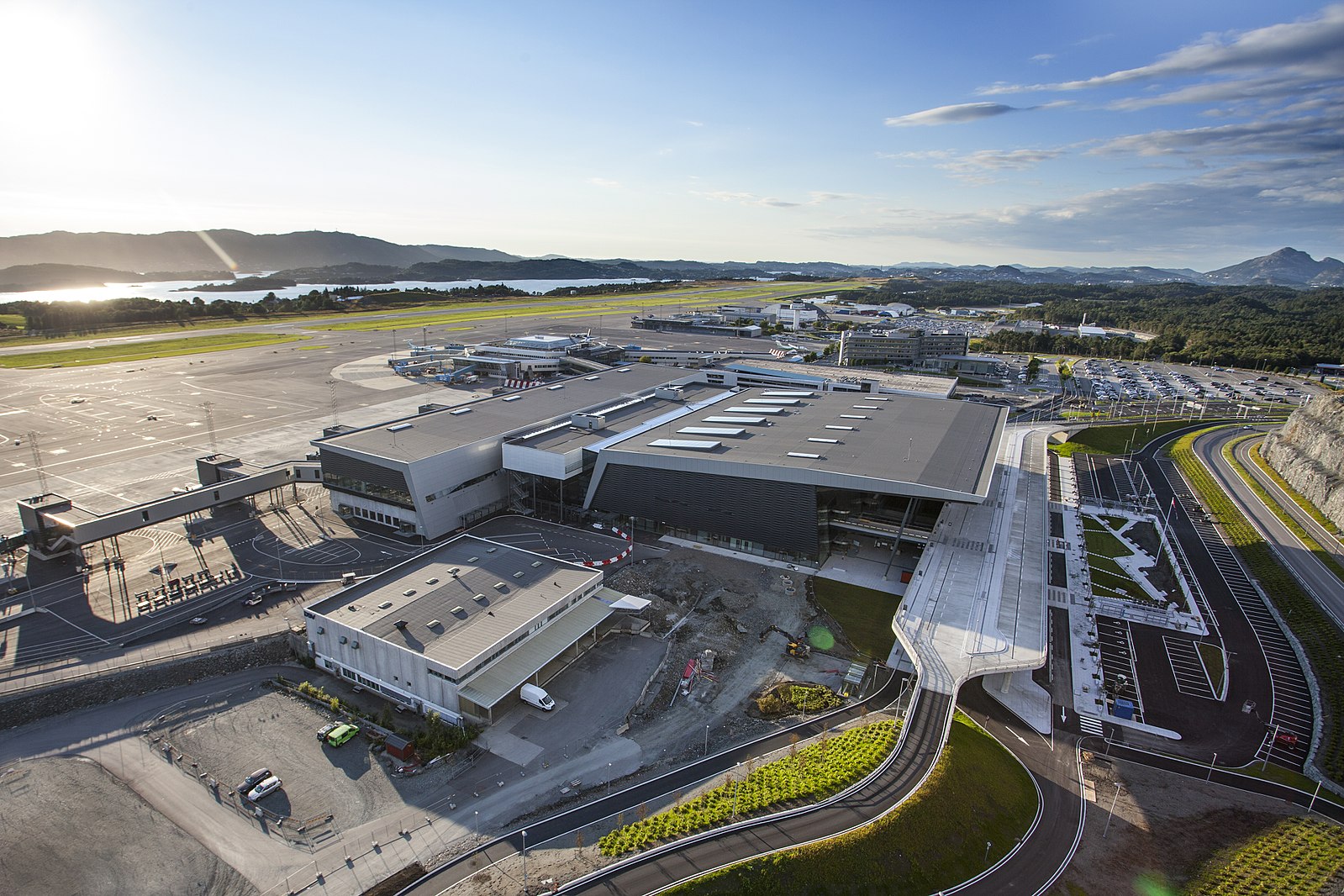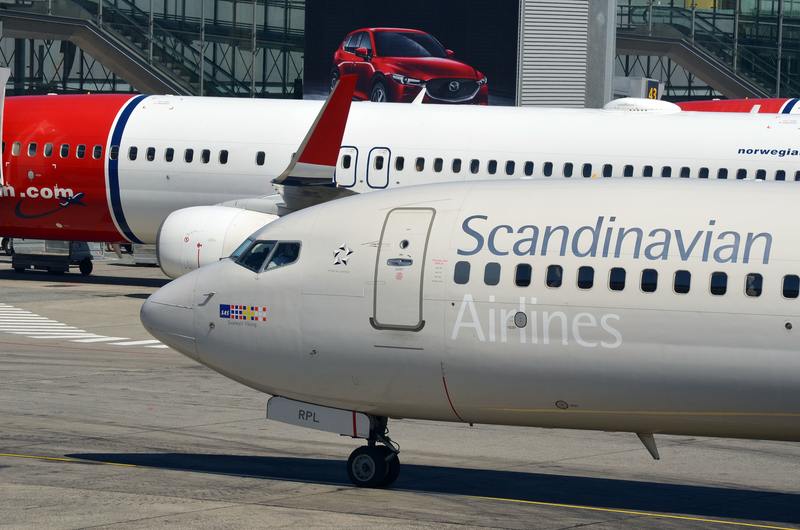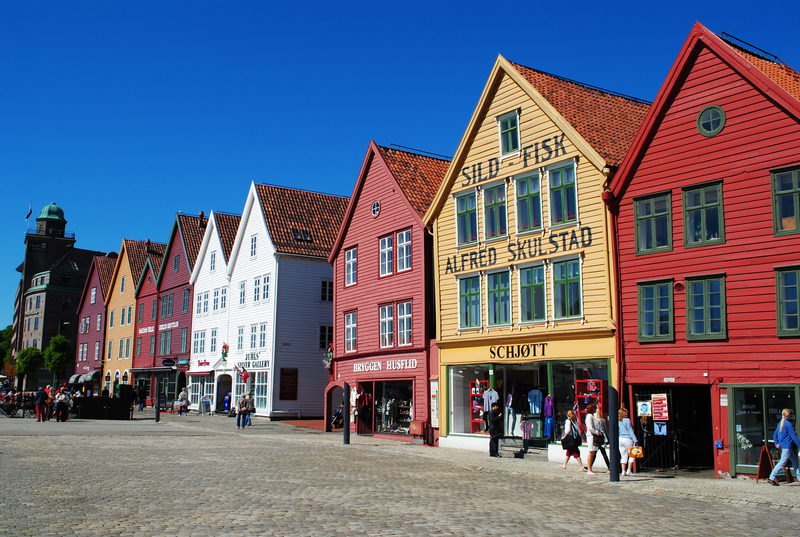Terminal +info
Bergen Airport’s modern Terminal 3 is spacious, bright, and efficient, designed for domestic flights with six gates and modular scalability for future growth. Its architecture features glass facades, timber ceilings, and a central double-height hall, offering clear passenger flow and natural light. The terminal includes ample shops, restaurants, and integrated light rail access, serving as a regional gateway to western Norway.
Contact
Address: Flyplassveien 555, Fresland, 5258 Bergen, NORWAY
Phone: +47 67 03 11 00
Transport +info
The following means of transport are available at Bergen Airport to the city center:
Bus: Public transport is available at Bergen Airport.
See more information
Taxi: Get to Bergen downtown within 20 minutes by taxi.
See more information
Light Rail: Transfer from Bergen Airport to Byparken (Bergen city centre) within 45 minutes.
See more information
Car hire: Hire a car at Bergen Airport or through our search engine.
See more information
Services +info
Bergen Airport boasts a modern, spacious terminal equipped with a wide range of amenities to ensure a comfortable and efficient travel experience for all passengers. Travelers can enjoy a variety of restaurants, cafés, and fast-food outlets, as well as numerous retail shops, including duty-free stores. Free Wi-Fi is available throughout the terminal, and ATMs and currency exchange services are conveniently located.
The airport offers dedicated parenting rooms, a well-staffed service centre, and conference facilities for business needs. Accessibility is a top priority, with wheelchair rental and assistance for passengers with special needs. There is also a medical clinic and police station for added security.
About Bergen
Bergen is a vibrant municipality situated in Hordaland county on Norway’s west coast, occupying the distinctive peninsula of Bergenshalvoyen. As the country’s second-largest city after Oslo, Bergen is a hub of culture, commerce, and history, deeply rooted in its maritime traditions. The city is affectionately known as “the city of the seven mountains” due to its dramatic setting, encircled by steep peaks that create a breathtaking natural amphitheater. Remarkably, about half of Bergen’s urban area extends into the Byfjorden, or city fjord, and includes several suburbs located on nearby islands, blending urban life with the rugged Norwegian coastline.
One of Bergen’s most iconic landmarks is Bryggen, the historic quayside district that stands as a proud symbol of the city’s long and storied past. Bryggen, which means “the wharf” in Norwegian, is a UNESCO World Heritage Site and is recognized as one of the oldest and best-preserved examples of a medieval commercial district in Northern Europe. Established as a center for trade by the 12th century, Bryggen became particularly important when the Hanseatic League set up its overseas office there in 1350. The Hanseatic merchants dominated the trade in stockfish from northern Norway and cereals from Europe, shaping the city’s economic and cultural development for nearly four centuries.
Today, Bryggen is celebrated for its colorful wooden buildings, which are arranged in long, narrow rows facing the harbor. These structures, rebuilt after devastating fires—most notably in 1702—retain the original medieval urban layout, with narrow wooden passages running between them. The district features around 62 preserved buildings, each offering a glimpse into the lives of the bachelor German merchants who once lived and worked here16. The architecture is a mix of traditional timber log construction and galleries with column and beam structures, all clad in horizontal wooden panels. The roofs, originally tiled with bricks or sheets, reflect the area’s resilience and adaptability over the centuries.
Bryggen is not only a visual delight but also a center for cultural exploration. The area houses several museums, including the Bryggen Museum, the Hanseatic Museum, and the Theta Museum, each telling different chapters of Bergen’s history—from medieval trade and daily life to resistance activities during World War II. Walking through Bryggen’s alleyways and overhanging galleries transports visitors back to a bygone era, offering a living connection to the city’s maritime and mercantile heritage.
In addition to its historical significance, Bryggen is a lively part of modern Bergen, with artisan workshops, restaurants, and boutique hotels nestled among the ancient buildings. The district’s enduring charm and authenticity make it one of Norway’s most photographed and visited attractions, embodying the spirit of a city that has welcomed visitors for over 950 years. Bergen’s unique blend of natural beauty, historical depth, and contemporary culture ensures its place as a must-see destination for travelers exploring Norway’s western coast.



